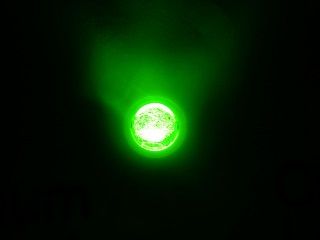From Guest Blogger Dr. Bulb: Energy Efficient Lighting is a More Viable Option as Technology Advances

Walter Hines Page, the editor of the Atlantic Monthly, saw the Electric Tower as an “epiphanous achievement, a masterpiece of human skill, a monument to the genius of man.” With rapidly advancing LED technology, it’s incredible to see how far lighting has come in 110 years. Today, the millions of incandescent light bulbs would instead be seen as a waste of energy compared to modern lighting technology and, although individual LED chips use as few as 3 watts of energy, the industry is still looking for ways to improve.
According to a report from the U.S. Energy Information Administration (EIA), LED light bulbs have improved their efficiency by nearly 50% since 2012. As stated by Haitz’s law, the cost per lumen falls by a factor of 10 every decade while the amount of light generated per LED package increases by a factor of 20. LED efficiency jumped from 60 lumens per watt in 2012 to nearly 100 lumens per watt in 2014. Prices continue to fall dramatically as LED technology advances, making energy-efficient lighting more affordable. The EIA states that LEDs now make long-term economic sense for consumers, even without incentives from government energy-efficiency incentives.
Companies are continuously releasing new LED products that produce superior light output at a lower cost and higher efficiency. Recently, Cree announced an xhp (extreme high power) LED bulb that is the least expensive to manufacture compared to any of the company’s previous bulbs. With double the lumen output as compared to previous bulbs, the LED can be made with a smaller lens, thereby reducing the cost. Also, because they work reliably at a higher temperature, this requires a less costly heat sink. These new LEDs are reportedly able to reduce the cost of LED fixtures by up to 40 percent.
Access Fixtures, a Massachusetts-based commercial and sports lighting company, recently introduced a 567w LED sports lighter that has the light output equivalent of a 1,500w metal halide sports lighter. The new luminaire produces more light and uses 65% less energy than the 1500 metal halide. It also lasts approximately 33 times longer.
Improvements and price reductions in LED products serve to expand the applications in which they can be used. LEDs are still priced at a premium compared to traditional light sources, but the return on investment (ROI) makes the initial cost worthwhile for most applications. LEDs are long-lasting, with many rated at LM70 for 100,000 hours, meaning they’ll likely never have to be replaced during the life of the fixture. This eliminates the cost for several replacements and installations and is especially ideal for sports lighting or other difficult-to-access locations. With their energy efficiency and minimal maintenance, LEDs bring a quick ROI.
Energy Star reports that LED shipments skyrocketed from 9 million light bulbs in 2011 to more than 45 million in 2013. Hopefully the advances in technology and reduced prices will accelerate the adoption of LED lighting and, consequently, usher in a new energy-efficient world.
What would the Pan-American Exposition be if they had LEDs? For one thing, it would definitely be more energy-efficient…
